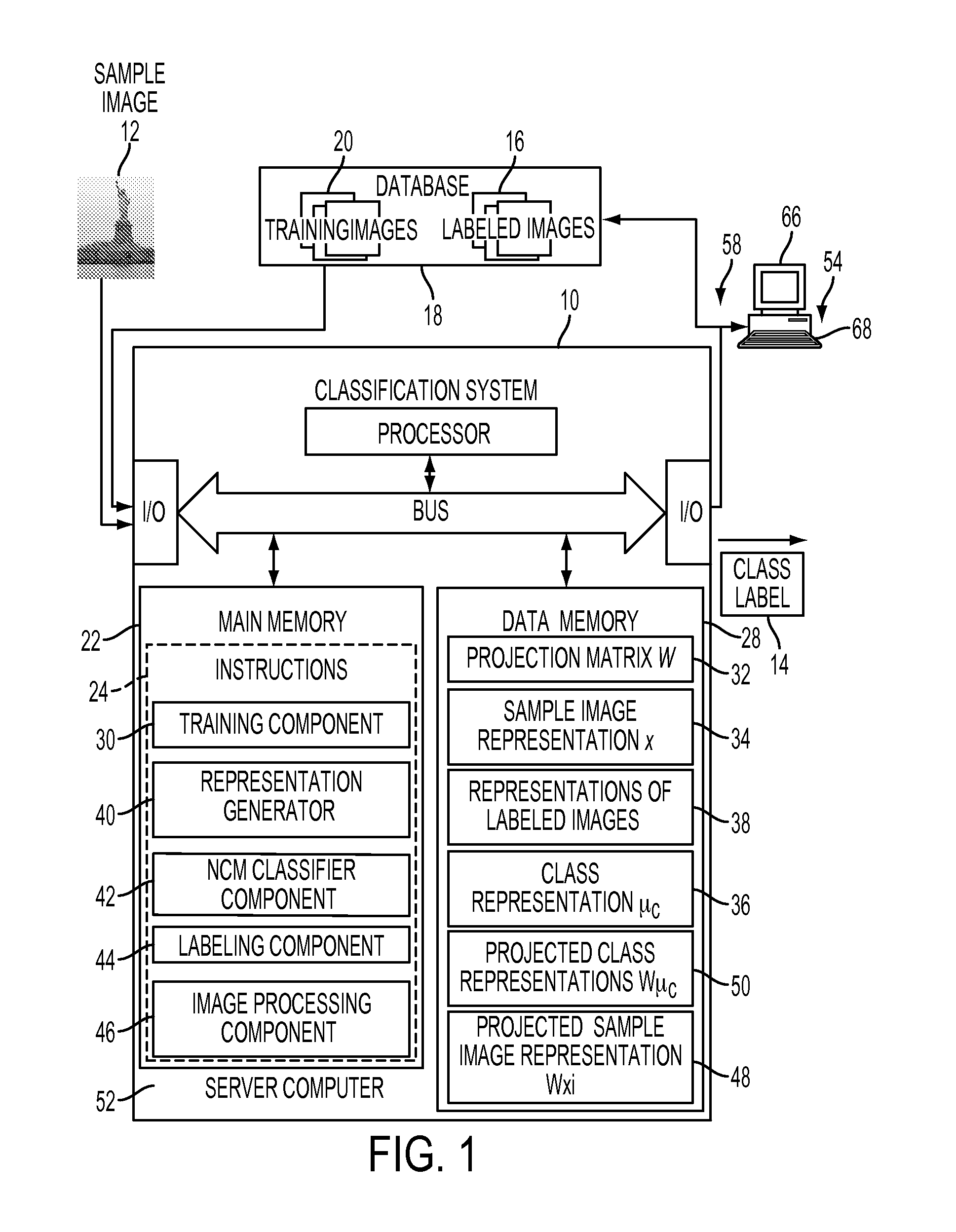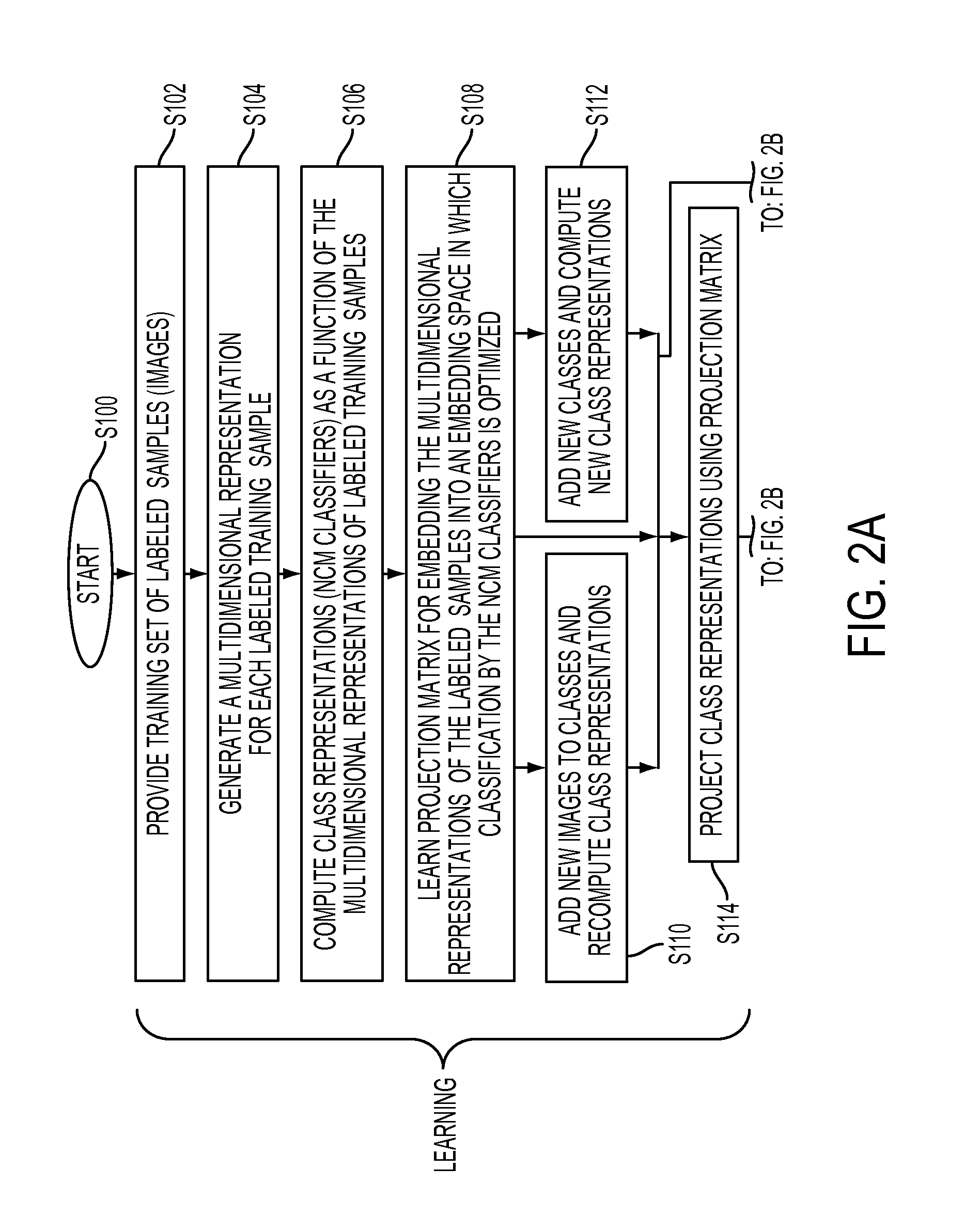Metric learning for nearest class mean classifiers
a technology of nearest neighbor and classifier, applied in the field of learning classifier, can solve the problems of reducing the performance of the method, computationally demanding large and high-dimensional datasets, and new classifiers that have to be trained at a relatively high computational cos
- Summary
- Abstract
- Description
- Claims
- Application Information
AI Technical Summary
Benefits of technology
Problems solved by technology
Method used
Image
Examples
examples
[0118]Results obtained for an NCM classifier are compared with those obtained with other methods. In particular, a k-NN classifier was used which also employed a metric learning approach (see the description below of this method). Results were also obtained for transfer learning where the metrics (projections) trained on some classes were applied to novel ones. Performance is assessed as a function of the number of training images. As a baseline comparison, one-vs-rest linear SVM classifiers were learned independently for each class.
Dataset
[0119]In most of the experiments, the dataset of the ImageNet Large Scale Visual Recognition 2010 challenge (ILSVRC'10) was used. This dataset contains 1.2 million training images of 1,000 object classes (with between 660 to 3,047 images per class), an evaluation set of 50,000 images, and a test set of 150,000 images.
Features
[0120]Each image was represented with a Fisher vector (FV) computed over densely extracted SIFT descriptors and local color ...
PUM
 Login to View More
Login to View More Abstract
Description
Claims
Application Information
 Login to View More
Login to View More - R&D
- Intellectual Property
- Life Sciences
- Materials
- Tech Scout
- Unparalleled Data Quality
- Higher Quality Content
- 60% Fewer Hallucinations
Browse by: Latest US Patents, China's latest patents, Technical Efficacy Thesaurus, Application Domain, Technology Topic, Popular Technical Reports.
© 2025 PatSnap. All rights reserved.Legal|Privacy policy|Modern Slavery Act Transparency Statement|Sitemap|About US| Contact US: help@patsnap.com



